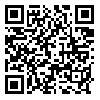BibTeX | RIS | EndNote | Medlars | ProCite | Reference Manager | RefWorks
Send citation to:
URL: http://jdm.tums.ac.ir/article-1-363-en.html
Statement of Problem: Elimination of porphyromonas gingivalis (p.g) from subgingival area in order to successfully treatment out comes in patients with Aggressive periodntitis AP is necessary.
Purpose: The aim of this study was the evaluation of non-surgical treatment efficacy in reduction of bacterial population in deep pockets.
Materials and Methods: In this randomized clinical trial study we evaluated the result of non- surgical therapy on reduction of p.g count from deep pockets of patients with aggressive periodontitis that had at least one (p.g plus) deep pocket (>5mm) in each quadrant. At first stage of non-surgical treatment intra pocket irrigation with chlorhexidin was done after scaling and root planning for all patients. In second stage (one week later) antibiotics including amoxicillin- metronidazol prescribed for ten days. At base line, one, six and twelve weeks after beginning of therapy, microbial samples, plaque index, bleeding on probing index and probing pocket index were recorded.
Result: There was statistically important difference between one and six weeks after treatment with base line in colony count of p.g and all of clinical indices. But in 12 weeks after therapy just, PI and PPD had statistical difference with base line. In this stage, colony count and BOP was reduced but this reduction had not statistically important difference with base line.
Conclusion: Thus in present study our non- surgical strategy in elimination of p.g and clinical improvement was successful in short time but three month after therapy recurrence of disease happened in some patients.
| Rights and Permissions | |
 |
This work is licensed under a Creative Commons Attribution-NonCommercial 4.0 International License. |




